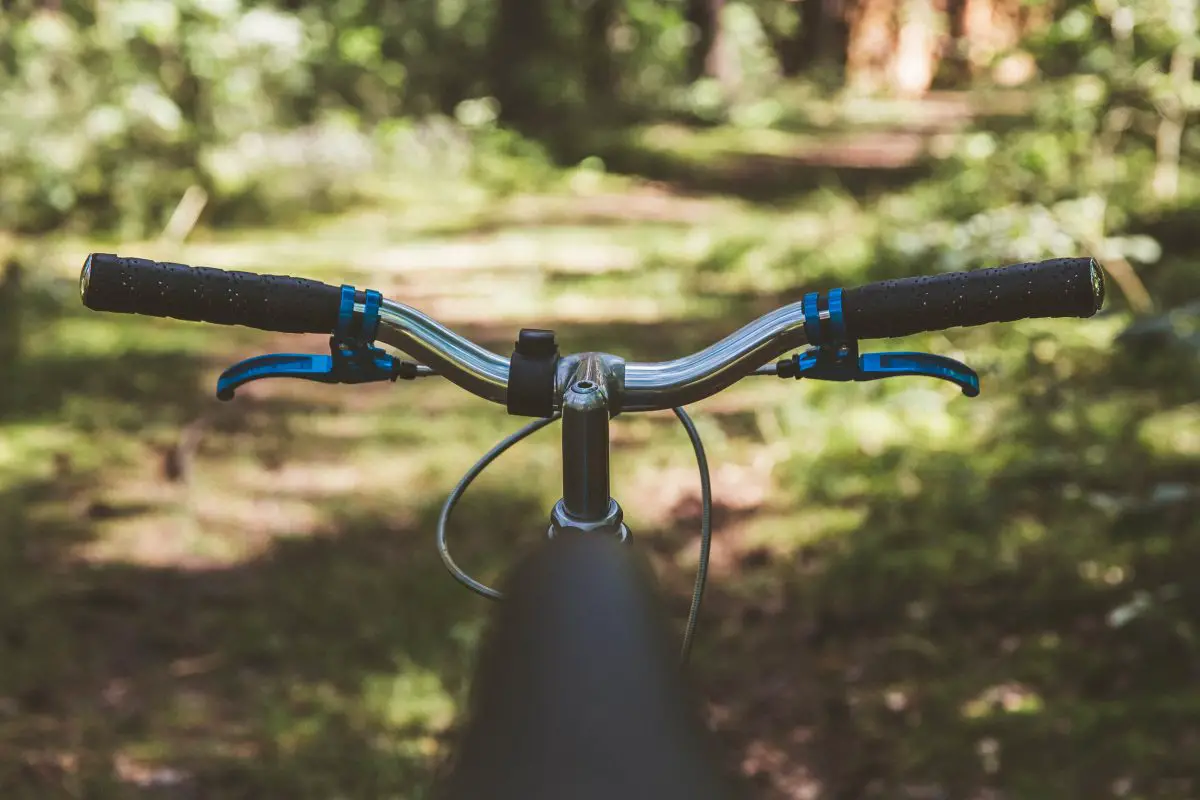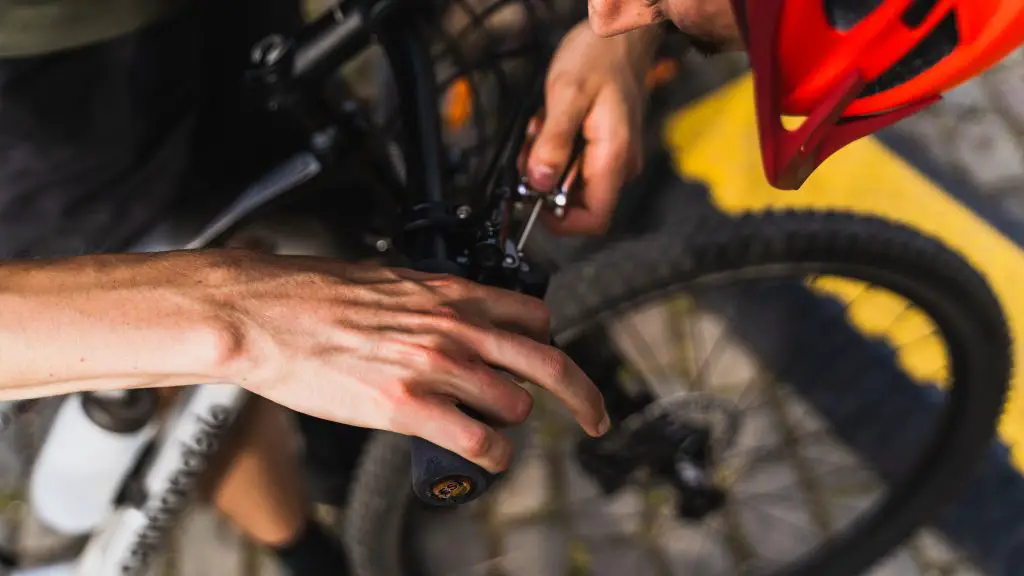Have you ever wondered what those small, inconspicuous objects at the ends of your bike handlebars are? Well, wonder no more! In this post, we’re diving into the world of bar end plugs. These unassuming accessories play a vital role in not only adding a touch of style to your ride but also ensuring your safety and preserving the integrity of your handlebars. Join us as we explore what bar end plugs are, why they matter, and how they can elevate your cycling experience to a whole new level.
What are bar end plugs? Bar end plugs are small inserts that fit into the open ends of your handlebars, sealing them off and providing added safety and functionality.
What are bar end plugs?
Bar end plugs for fixed-gear bicycles are small accessories that are inserted into the open ends of the handlebars. They serve multiple purposes:

- Safety: Bar end plugs help prevent injury by covering the open ends of the handlebars. In the event of a crash or fall, they can prevent the handlebars from causing puncture wounds or getting lodged in the rider’s body.
- Protection: The plugs act as protective caps, keeping dirt, dust, and moisture from entering the handlebars. This helps prevent corrosion and maintains the longevity of the handlebars.
- Aesthetics: Bar end plugs can enhance the overall look of the bike. They come in various colors, designs, and materials, allowing riders to personalize their bicycles and match the plugs to their style or bike components.
To install bar end plugs, the rider simply inserts them into the open ends of the handlebars until they fit securely. Some plugs may have additional features like cinch bolts or screws to provide a more secure fit.
You can find bar end plugs for fixed-gear bicycles in various bike shops, both physical stores and online retailers, that specialize in bicycle parts and accessories. Remember to choose bar end plugs that are compatible with the inner diameter of your handlebars to ensure a proper fit.
State Bicycle Co. Black Label 6061

State Bicycle Co. Black Label 6061
What are the types of handlebar end plugs?
There are different types of handlebar end plugs available. Let’s explore the options and find out which one suits your style and needs best!
1. Screw-in bar end plugs
Screw-in bar end plugs, as the name suggests, require some assembly. These plugs come in segregated form, with an interior rubber or plastic cylinder that needs to be screwed in with the aluminum exterior. While they may not be the most preferred choice due to their tricky assembly procedure, they do offer a secure fit once properly installed.
2. Push-in bar end plugs
Looking for a fuss-free installation process? Push-in bar end plugs are your best bet. These plugs, usually made of plastic or nylon, are flexible and hold tight inside the hollow bar end. They provide a simple and effective solution without any complicated assembly. If you’re willing to invest a bit more, you can even find durable push-in bar end plugs made of elastomer, offering added longevity and reliability.
When selecting the right type for your bike, consider factors such as assembly ease, durability, style, and the level of control you desire.
3. Ring bar end plugs
Have you ever wondered about those sleek, ring-shaped bar end plugs you’ve seen? Ring bar end plugs, typically made of aluminum alloy, are known for their durability and lightweight design. These plugs snap onto the bar ends and feature a lock-on grip system, ensuring a secure attachment to the edge of the bar end. While they may not be as popular due to their higher price range, they do provide a stylish and functional option for those looking for durability.
4. Extender bar end plugs
These types of handlebar end plugs are longer than standard options, providing a few extra inches for better control and maneuverability. They are particularly useful for riders who desire a more comfortable hand position while tackling challenging terrains. With added length and improved grip, they offer a practical solution for riders seeking enhanced control.
When selecting the right type for your bike, consider factors such as assembly ease, durability, style, and the level of control you desire. Always prioritize safety and opt for reliable brands that offer high-quality products.

What to look for when buying handlebar end plugs
Ready to make an informed purchase decision when it comes to handlebar end plugs? Let’s delve into the key factors you should consider to ensure quality, durability, and user convenience.
1. Material: the right blend of rigidity and flexibility
What material should you choose when buying handlebar end plugs? The ideal choice for the interior is rubber, which strikes the perfect balance between rigidity and flexibility. Rubber plugs are easy to push in without difficulty, whether you opt for push-in or screw-in options. For the exterior cap, materials like aluminum or carbon fiber are recommended. These materials are durable, lightweight, and heat-resistant, ensuring a reliable performance during your sun-soaked cycling sessions.
This table provides a comparison of different handlebar end plug materials. It highlights their characteristics, pros, and cons to help you make an informed decision when choosing the right handlebar end plugs for your bike.
| Material | Characteristics | Pros | Cons |
|---|---|---|---|
| Rubber | Rigid yet flexible, easy to install | – Easy to push in without difficulty – Provides a secure fit – Suitable for both push-in and screw-in plugs | – May not offer the most premium look and feel |
| Aluminum | Durable and lightweight | – Sleek appearance – Adds minimal weight to the bike – Heat-resistant for sun-soaked rides | – May be more expensive compared to other materials |
| Carbon Fiber | Strong and lightweight | – Offers high strength-to-weight ratio – Provides a premium and modern look | – Can be more expensive than other materials – Requires proper care to prevent damage |
| Nylon | Lightweight and flexible | – Easy to install – Provides a snug fit – Budget-friendly option | – May not offer the same level of durability as other materials |
2. Size: finding the perfect fit
How do you ensure the right fit for your handlebar end plugs? While there’s no specific size chart, you can measure the socket of your bar ends before beginning your search. Standard-size rubber bar end plugs measuring 0.8 to 1 inch in diameter fit most bicycles without any loose ends. However, be cautious with handlebar end plugs measuring less than 0.8 inches, as they can be challenging to install on average bicycles.
3. Exterior finish: adding a touch of finesse
Does the exterior finish make a difference? While it may not significantly impact the functionality of your handlebar end plugs, it can certainly add to the finesse of your handlebars. Look for plugs that feature a smooth powder coat or a glossy aluminum coat. These finishes not only enhance the overall appearance of your bike but also offer a sleek and polished look. On the other hand, plain materials like rubber can blend seamlessly with handlebar covers, making them suitable for most cases.
When buying handlebar end plugs, remember to prioritize quality and reliability. Opt for trusted brands that offer well-constructed products to ensure they stand the test of time and provide a secure fit. Here’s a small table of dos and don’ts to help you make the right choices when it comes to handlebar end plugs:
| Dos | Don’ts |
|---|---|
| Choose high-quality materials | Settle for low-quality, flimsy plugs |
| Measure the socket for a proper fit | Guess the size and end up with loose plugs |
| Opt for a durable and heat-resistant exterior finish | Overlook the importance of exterior aesthetics |
| Prioritize safety and functionality | Ignore the potential risks of exposed handlebar ends |
Advantages and disadvantages of using bar end plugs
Handlebar end plugs offer various benefits for fixed-gear cycling. Let’s take a look at their advantages and disadvantages:
Advantages of using bar end plugs
- Enhanced safety: Handlebar end plugs provide a protective barrier, reducing the risk of injuries caused by exposed handlebar ends.
- Secure grip: With the right handlebar end plugs, you can enjoy a secure grip, ensuring better control and maneuverability.
- Added functionality: Some handlebar end plugs offer hidden storage compartments, allowing you to store small essentials or emergency items conveniently.
- Aesthetically pleasing: Choose handlebar end plugs that match your bike’s style and enhance its overall appearance.
- Easy installation: Many handlebar end plugs are simple to install, allowing you to quickly equip your bike for a ride.
Disadvantages of using bar end plugs
- Cost: High-quality handlebar end plugs made of premium materials may come at a higher price point.
- Maintenance: Certain materials, such as carbon fiber, require proper care to prevent damage and maintain their longevity.
- Aesthetic limitations: The appearance of handlebar end plugs may not suit everyone’s personal style preferences.
- Material durability: Some materials may not offer the same level of durability as others, potentially requiring more frequent replacements.
If you want even more great tips and information, check out the video.
Frequently asked questions (FAQ)
Do you still have questions about bar end plugs? Below are some of the most commonly asked questions.
Are handlebar end plugs necessary for all types of bikes?
Yes, handlebar end plugs are highly recommended for all types of bikes, including fixed-gear, single-speed, and track bikes. They provide safety benefits by covering exposed handlebar ends and preventing potential injuries.
Can I install handlebar end plugs on my own?
Absolutely! Installing handlebar end plugs is a simple task that you can easily do on your own. Most handlebar end plugs come with straightforward installation instructions, and you’ll only need basic tools like a wrench or a screwdriver.
Do handlebar end plugs affect my bike’s performance?
No, handlebar end plugs have no significant impact on your bike’s performance. They are lightweight accessories that don’t interfere with your bike’s handling or speed. In fact, they contribute to a safer and more comfortable ride.
Conclusion
Well, folks, it’s time to wrap up this journey into the world of handlebar end plugs. We’ve explored the types, discussed what to look for when buying, and uncovered the benefits they bring to your cycling experience.
Did I cover everything you wanted to know? Let me know in the comments section below—I read and reply to every comment. If you found this article helpful, share it with a friend, and check out my full blog for more tips and tricks on cycling. Thanks for reading, and remember to ride safely, ride stylishly, and enjoy every adventure that comes your way. Happy cycling!
Key takeaways
This article covered handlebar end plugs for fixed-gear cycling. Here are some key takeaways:
- Handlebar end plugs provide safety by covering sharp handlebar ends and preventing injuries.
- Consider the material, size, and exterior finish when choosing handlebar end plugs.
- Handlebar end plugs offer benefits like added safety, secure grip, and hidden storage options.
- Rubber, aluminum, carbon fiber, and nylon are common materials used for handlebar end plugs.















